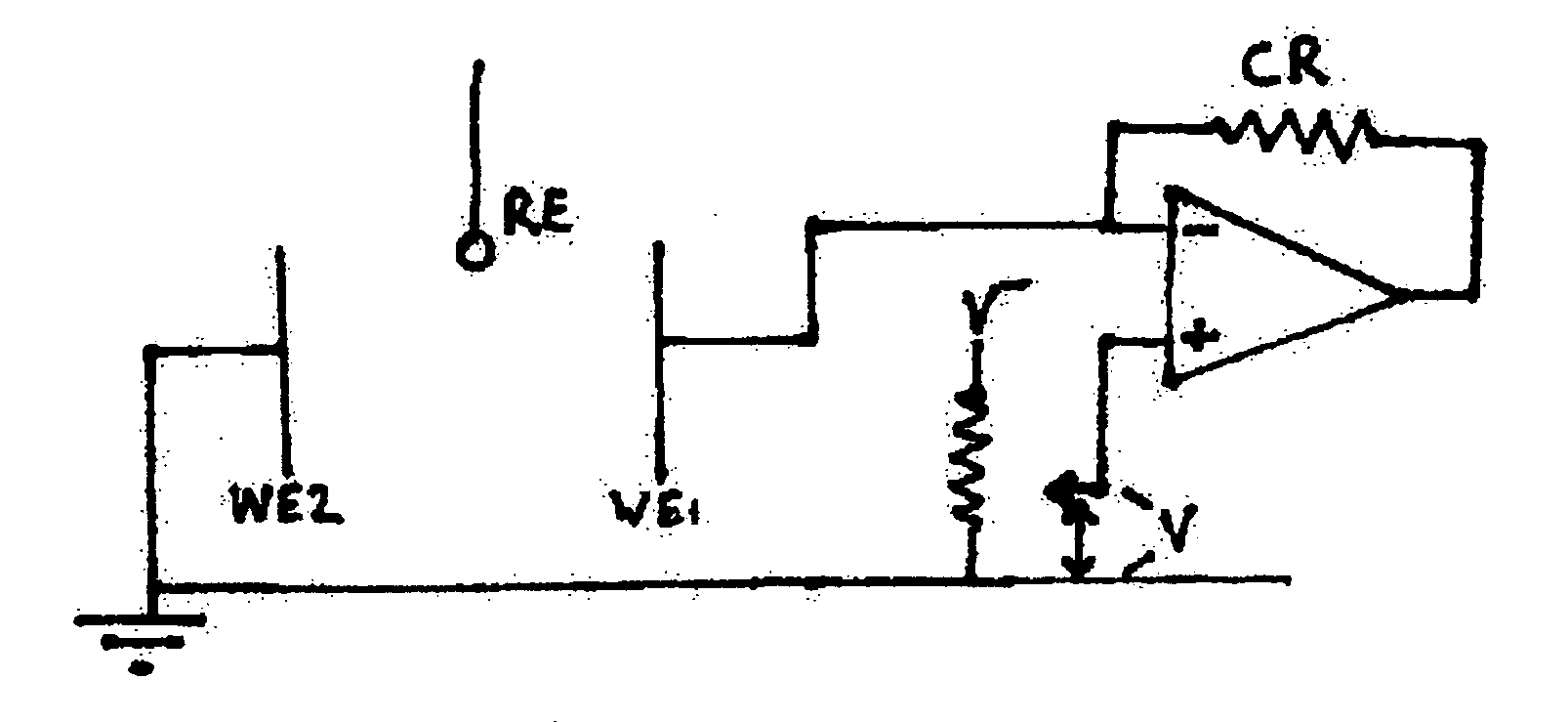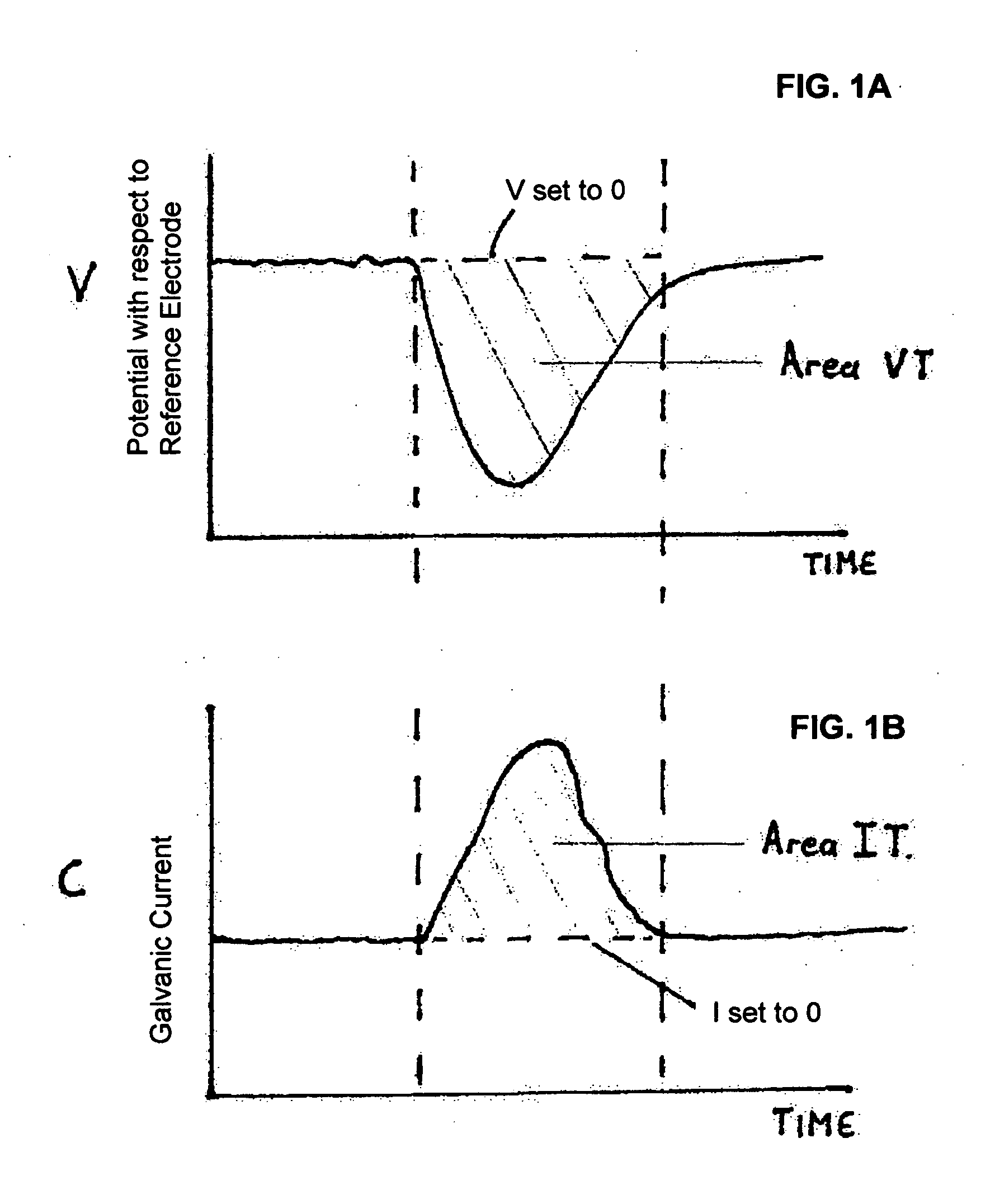General and localized corrosion rate measurements
a technology of corrosion rate and measurement method, applied in the direction of liquid/fluent solid measurement, material electrochemical variables, instruments, etc., can solve the problems of corrosion failure in many oil and gas production systems, equipment localized corrosion is a serious problem, and methods do not readily give a localized corrosion measurement method
- Summary
- Abstract
- Description
- Claims
- Application Information
AI Technical Summary
Benefits of technology
Problems solved by technology
Method used
Image
Examples
example i
[0054] Example I is a simple case where there are just two otherwise identical coupled electrodes. During a localized corrosion event, one of the two electrodes WE1 or WE2 will pit. The pitting process produces a load of electrons. These electrons are quickly distributed between the coupled electrodes WE1 and WE2. The electrons are used up by a cathodic reaction on the two electrodes. It follows that as the coupled electrodes are identical, half the electrons produced by the localized event pass to the non pitting electrode. The ZRA coupling WE1 and WE2 enables one to measure the current flowing between the two electrodes. Thus, half the current due to the pitting event may be monitored. The base line for the current should be taken as the level of current flowing just before the start of the transient. In a two electrode system, it is quite apparent which electrode is pitting due to the direction of the current flow. It is the total number of coulombs that flowed during the period ...
example ii
[0058] There should also be considered a case where the two coupled electrodes are not identical, say brass and aluminum, as shown schematically in FIG. 2A. In this case the numbers of coulombs can not be easily calculated due to the localized event since the cathodic reactions on the two metals are different, so by just measuring the number of coulombs flowing between the two electrodes, it is not readily possible to measure the amount of electrons produced by the localized corrosion site. However it is still possible to measure the general corrosion rate of the electrode without the pit, as the polarization relative to uncoupled electrode and the level of current of the coupled electrode are known.
[0059] In this case, it will be necessary to apply a polarization to the coupled electrodes in the same way as for standard LCM. Alternatively, one of the coupled working electrodes (WE1 and WE2, where RE refers to the reference electrode) can be offset using a two electrode polarizatio...
example iii
[0068] The next case to consider is multiple working electrode couples. For instance, in the case of a segmented weld with five electrodes coupled via ZRAs, the same theories and principles hold up as well. If all the elements are pretty much identical, then a single pit site can give the LPR value and total number of coulombs passed by the pit site. In this case with identical electrodes, the number of coulombs passed to the other electrodes via the ZRAs is 5 / 4×the transfer current.
PUM
 Login to View More
Login to View More Abstract
Description
Claims
Application Information
 Login to View More
Login to View More - R&D
- Intellectual Property
- Life Sciences
- Materials
- Tech Scout
- Unparalleled Data Quality
- Higher Quality Content
- 60% Fewer Hallucinations
Browse by: Latest US Patents, China's latest patents, Technical Efficacy Thesaurus, Application Domain, Technology Topic, Popular Technical Reports.
© 2025 PatSnap. All rights reserved.Legal|Privacy policy|Modern Slavery Act Transparency Statement|Sitemap|About US| Contact US: help@patsnap.com



